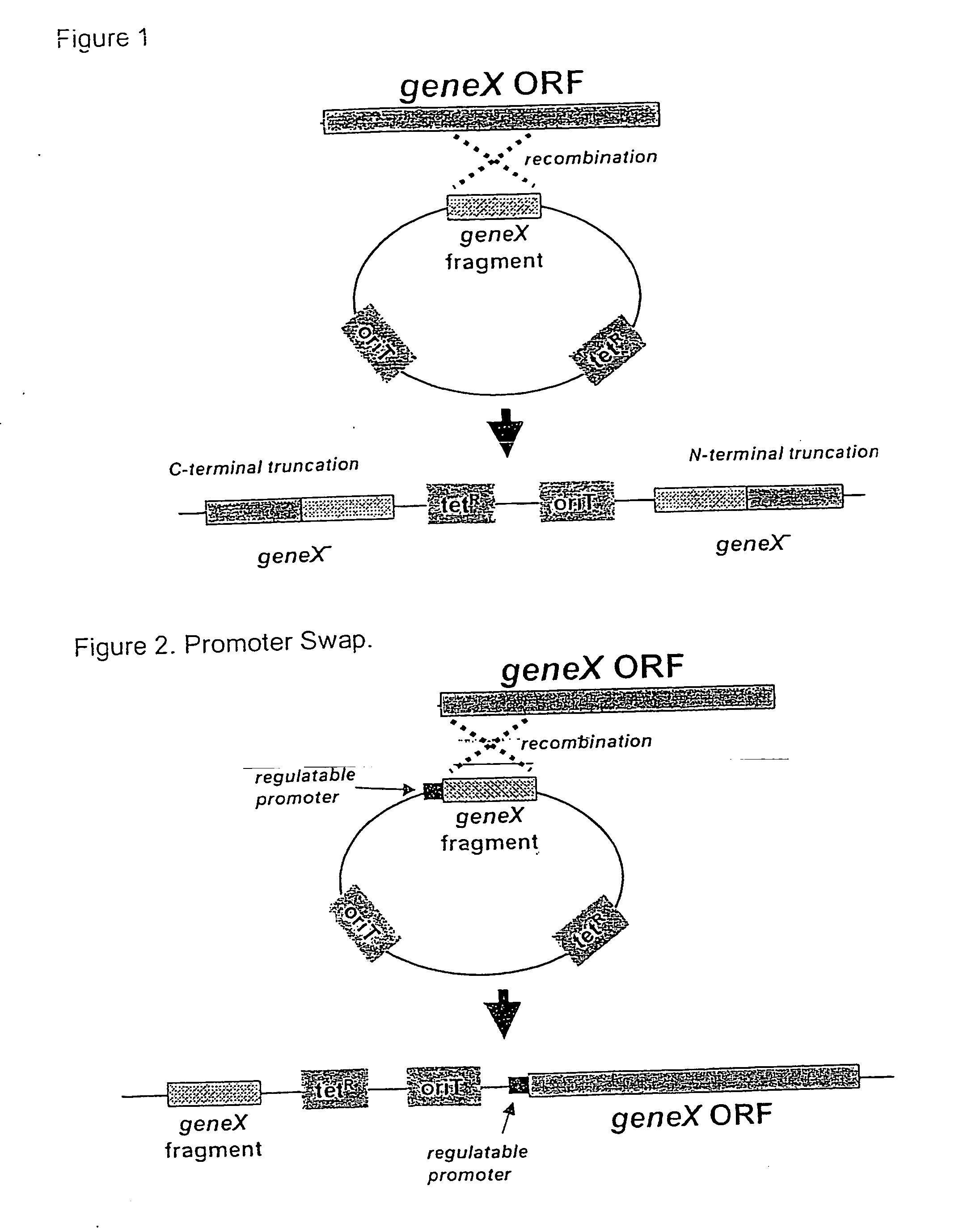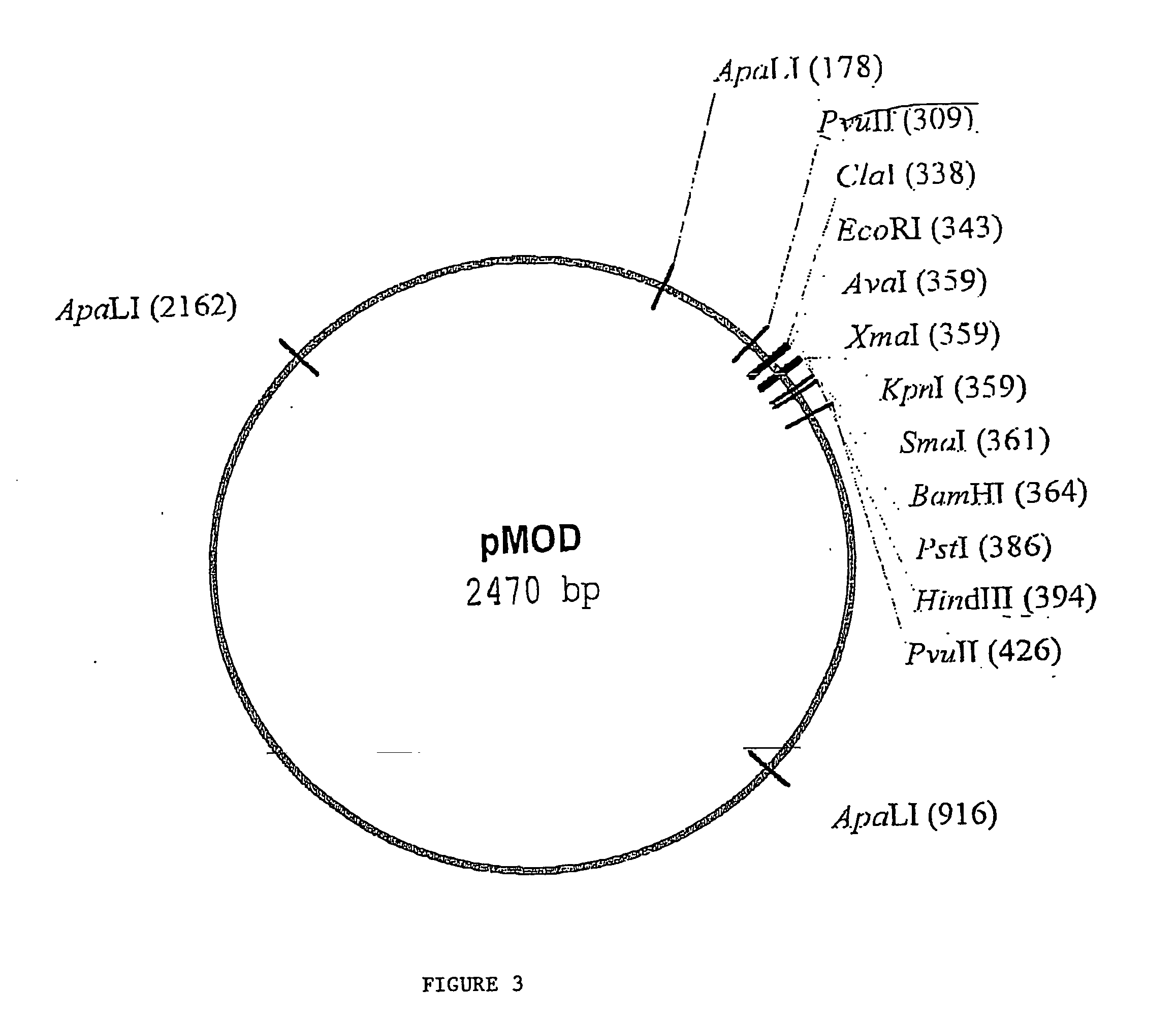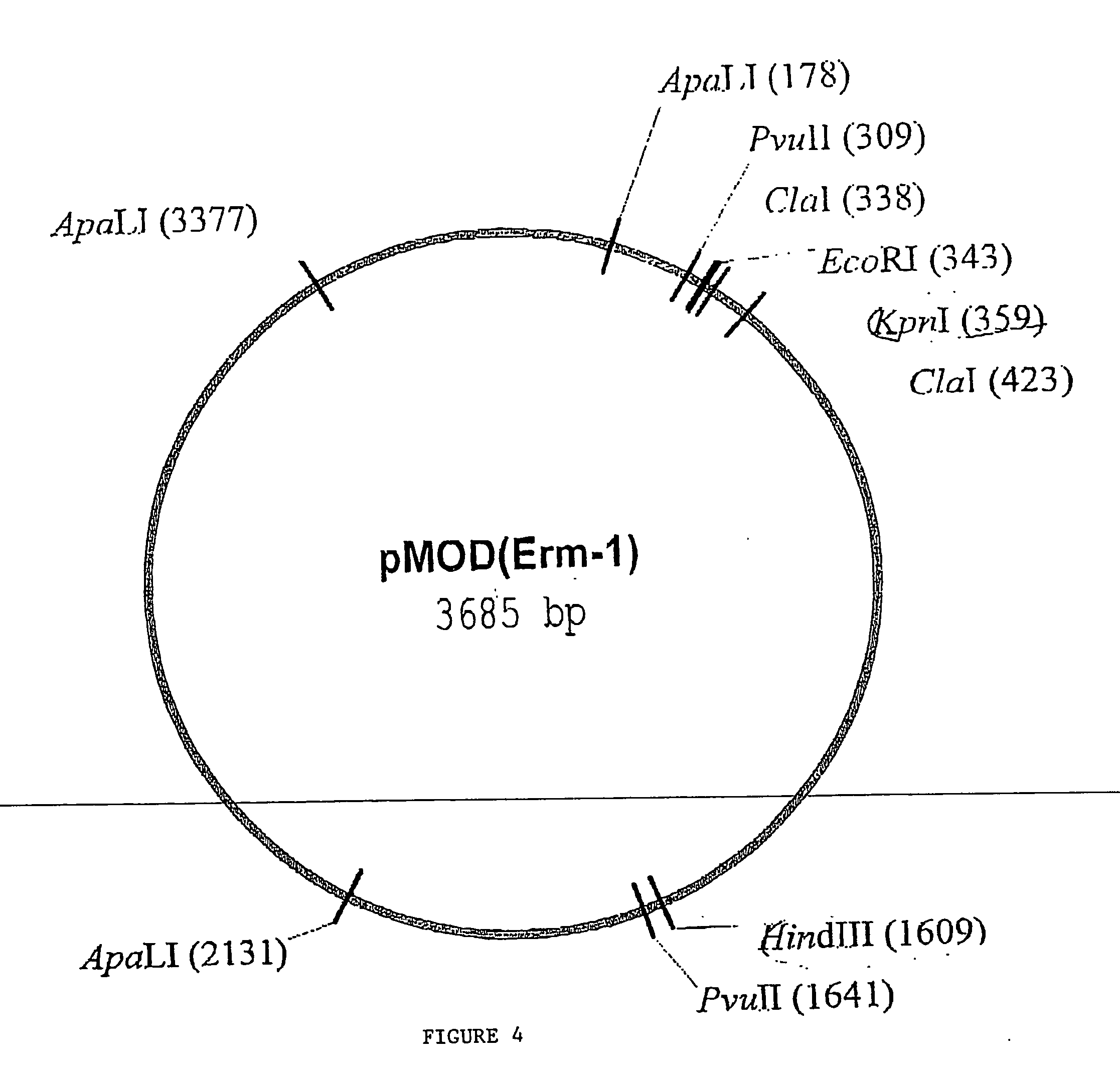Random transposon insertion in staphylococcus aureus and use thereof to identify essential genes
a technology of staphylococcus aureus and random transposon, which is applied in the field of random transposon insertion in staphylococcus aureus and use thereof to identify essential genes, can solve the problems of inability to develop resistant bacterial strains, and inability to identify essential genes and proteins, so as to reduce the possibility of developing resistant bacterial strains, increase gene expression, and reduce the expression of essential genes
- Summary
- Abstract
- Description
- Claims
- Application Information
AI Technical Summary
Benefits of technology
Problems solved by technology
Method used
Image
Examples
embodiment 1
4. A method of screening for an antibacterial agent, comprising determining whether a test compound is active against the bacterial gene of
5. A method of screening for an antibacterial agent, comprising determining whether a test compound is active against the protein encoded by the bacterial gene of embodiment 1.
embodiment 2
6. A method of screening for an antibacterial agent, comprising determining whether a test compound is active against the essential or important bacterial gene of
7. A method of screening for an antibacterial agent, comprising determining whether a test compound is active against the protein encoded by the essential or important bacterial gene of embodiment 2.
embodiment 3
8. A method of screening for an antibacterial agent, comprising determining whether a test compound is active against the essential or important bacterial gene of
9. A method of screening for an antibacterial agent, comprising determining whether a test compound is active against the protein encoded by the essential or important bacterial gene of embodiment 3.
PUM
| Property | Measurement | Unit |
|---|---|---|
| Fraction | aaaaa | aaaaa |
| Fraction | aaaaa | aaaaa |
| Fraction | aaaaa | aaaaa |
Abstract
Description
Claims
Application Information
 Login to View More
Login to View More - R&D
- Intellectual Property
- Life Sciences
- Materials
- Tech Scout
- Unparalleled Data Quality
- Higher Quality Content
- 60% Fewer Hallucinations
Browse by: Latest US Patents, China's latest patents, Technical Efficacy Thesaurus, Application Domain, Technology Topic, Popular Technical Reports.
© 2025 PatSnap. All rights reserved.Legal|Privacy policy|Modern Slavery Act Transparency Statement|Sitemap|About US| Contact US: help@patsnap.com



